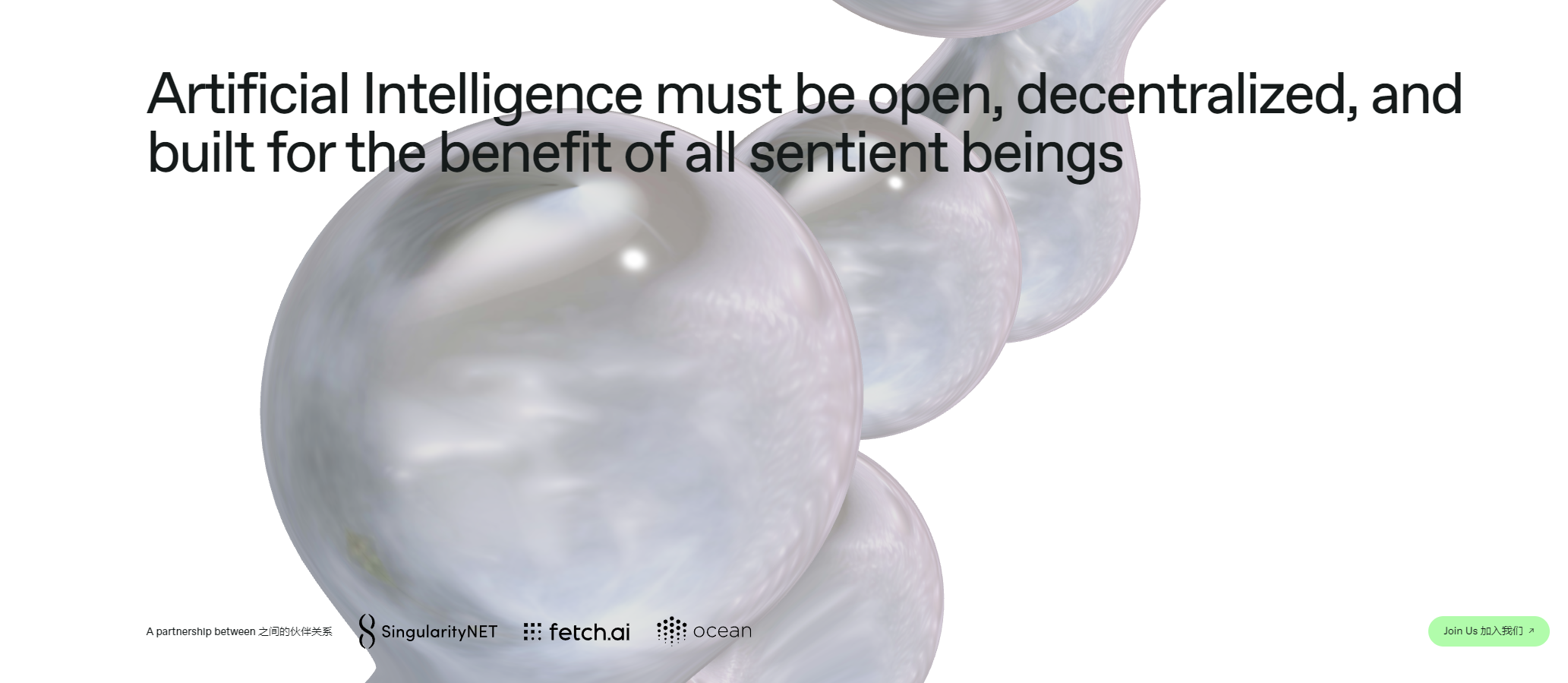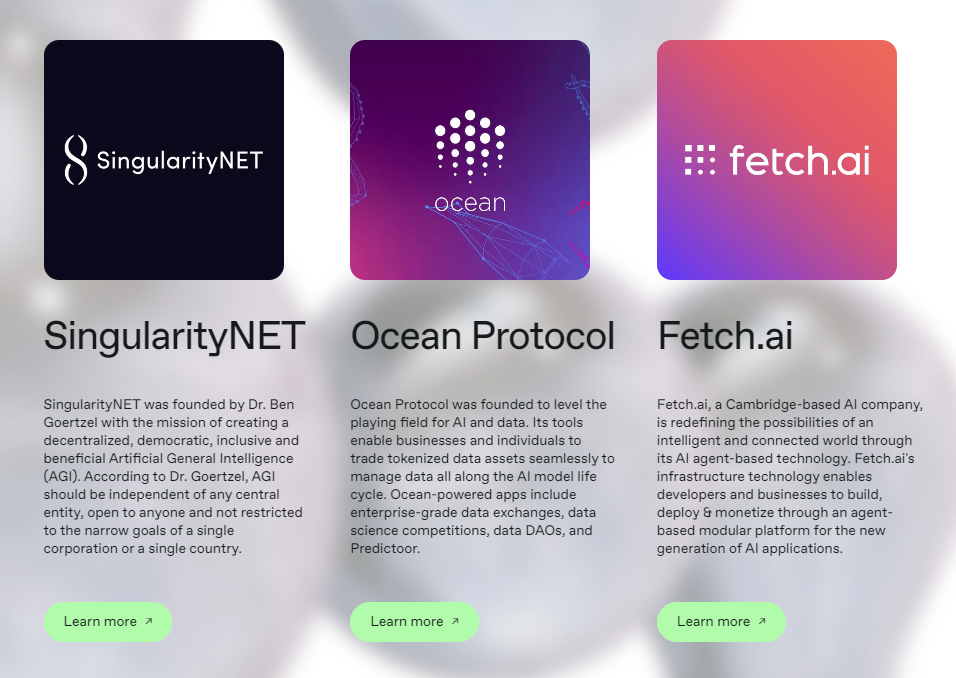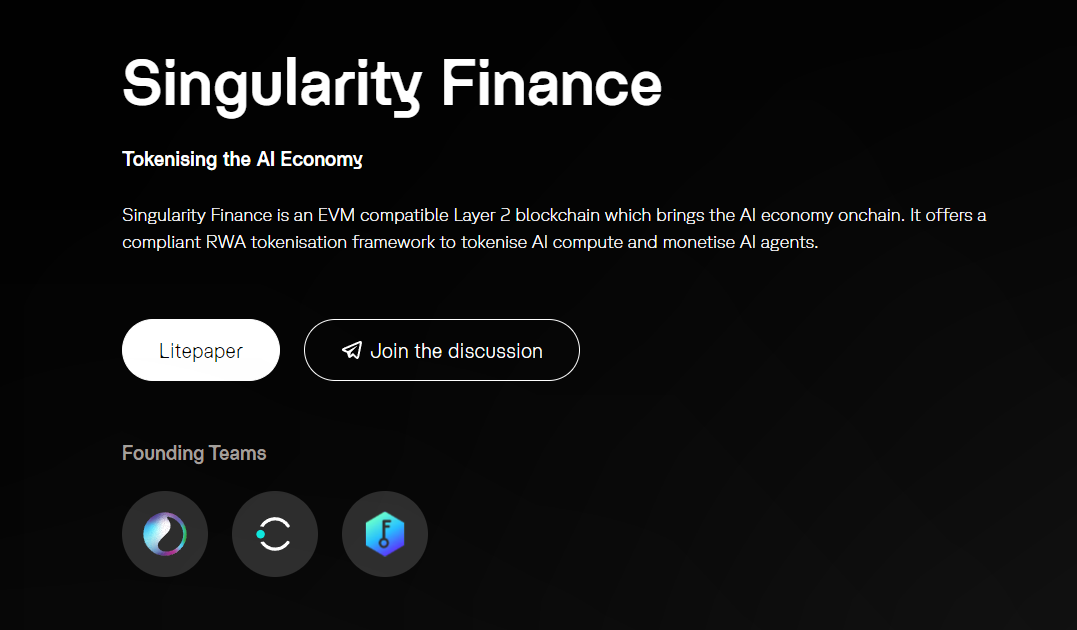Author: Frank, PANews
On October 15, SingularityDAO, Cogito Finance, and SelfKey announced plans to merge, forming a new project called Singularity Finance (SFI) that focuses on the tokenization of the artificial intelligence (AI) economy. The new entity will provide a Layer 2 network for tokenizing assets (such as GPUs) and offer AI-driven financial tools.
Upon hearing this news, many felt a bit confused, as SingularityNET had completed a merger in June of this year. Why is there another merger announcement? In fact, SingularityNET completed a similar merger with AI projects like Fetch.ai and Ocean Protocol in June. It remains unclear whether SingularityNET has enjoyed the benefits of merging, prompting its ecosystem project SingularityDAO to follow suit.
SingularityNET, SingularityDAO, and the Confusion of Singularity
Perhaps the term "Singularity" is too closely associated with technology, leading many projects to adopt it as part of their names. This has resulted in confusion in the crypto space, with three projects—SingularityNET, SingularityDAO, and Singularity—making it difficult to distinguish between them.
In reality, SingularityNET and SingularityDAO are intricately connected, while Singularity is an instant payment solution for Web3 games from India, unrelated to SingularityNET and SingularityDAO.
To briefly introduce, SingularityNET is a decentralized AI platform and marketplace that allows developers and companies to share, create, sell, or purchase AI services. SingularityDAO, on the other hand, is a key project within the SingularityNET ecosystem, focusing on the integration of decentralized finance (DeFi) and AI technology.
Founded in 2017, SingularityNET completed a $36 million initial token offering that same year. It launched its project token AGIX in 2018, which currently has a market cap of approximately $750 million.
On March 27, 2024, Fetch.ai, SingularityNET, and Ocean Protocol announced the final agreement for a merger of their tokens, creating the largest open-source entity in AI research: the Artificial Superintelligence Alliance. This alliance has now been established, and in July, the original three projects began migrating their tokens FET, OCEAN, and AGIX to the new token ASI.

On October 15, the project SingularityDAO within the SingularityNET ecosystem announced its merger with Cogito Finance and SelfKey to create an AI-focused Layer 2 network, with the new merged project named Singularity Finance.
Can the Merger Achieve 1+1+1>3?
As projects within the main network begin to merge, it raises curiosity about whether these mergers can truly yield a 1+1+1>3 effect. Here, we will focus on the performance of the already merged Fetch.ai, SingularityNET, and Ocean Protocol.
First, looking at token performance, before the merger, SingularityNET's token AGIX had a market cap of approximately $1.52 billion, while Fetch.ai's token FET had a market cap of about $2.97 billion. Ocean Protocol's token OCEAN had a market cap of around $673 million. As of the merger date on March 27, the combined market cap of the three projects was approximately $5.163 billion. After the merger announcement, the new token ASI (currently still coded as FET) saw its market cap reach $6.3 billion at one point. From the perspective of token market performance, it indeed achieved a 1+1+1>3 effect.
On September 11, 2024, the ASI alliance announced the inclusion of the globally distributed computing network CUDOS as a member. As part of the integration, the CUDOS token (CUDOS) will merge into the ASI alliance token (FET). On September 27, CUDOS officially began its token migration.

However, from the overall actions of ASI, the current merger is still in the token merging phase, and the four projects seem to remain independently operated. According to the official website, after the token merger, there will be deployment and upgrades of the ASI network, but current progress still shows as pending. As of October 16, the market cap of the ASI token was approximately $3.5 billion, having dropped nearly half since the merger. The official documentation states that the merged token is a prerequisite for achieving greater interoperability among the three ecosystems.
Additionally, it seems that the merger has not brought true prosperity to these projects. For example, as per tokenterminal data, as of October 15, Ocean Protocol's daily active users were only 109. From the chart, it can be seen that the project's daily active users briefly exceeded 7,000 in June, but then declined sharply. The other two projects lack statistical data, making it impossible to ascertain their specific network activity. On SingularityNET's social media, many users have commented, questioning the alliance due to the lack of concrete products, such as "First create a product; I don't even know why I invested in this."
What Will SingularityDAO Create by Following the Example?
In contrast to the grand narrative of merging with SingularityNET and the other two projects (to create a decentralized AI infrastructure), SingularityDAO, which previously focused on DeFi protocols, plans to build an AI-based EVM Layer 2 for the tokenization of real-world assets (RWA) after merging with Cogito Finance and SelfKey. According to official plans, the integration will make SelfKey's existing token KEY the new token SFI for Singularity Finance. SingularityDAO's SDAO and Cogito's CGV will merge into SFI at ratios of 1:80.353 and 1:10.89, respectively.
However, this merger does not seem to have generated much market excitement. The benchmark token KEY not only failed to rise quickly after the news broke but instead fell continuously, dropping 5.48% on October 16.
The three projects involved in this merger have primarily focused on the DeFi space, with SelfKey being a blockchain-based self-sovereign identity ecosystem, and Cogito Protocol being an AI-based RWA protocol. From a narrative perspective, merging these three to create an AI system focused on the RWA track for Layer 2 is indeed a timely response to current mainstream topics.

Looking back at the past experiences in the crypto space, merger actions are relatively rare.
Observing the two merger activities within the SingularityNET system, it is notable that the participating projects were mostly established before 2022, with many being "old projects" from 2017-2018. As the industry has developed, the attention on most "old projects" has gradually diminished in this bull market, and fundraising has become more challenging. Creating a brand new project through merging not only allows for the integration of strengths from each but also better aligns with market preferences.
Therefore, the path of merging presents a novel solution for "old projects" facing similar challenges. However, whether the goal of the merger is to create a more meaningful product or merely to achieve a 1+1+1>3 effect in terms of token market value and narrative remains to be observed.
免责声明:本文章仅代表作者个人观点,不代表本平台的立场和观点。本文章仅供信息分享,不构成对任何人的任何投资建议。用户与作者之间的任何争议,与本平台无关。如网页中刊载的文章或图片涉及侵权,请提供相关的权利证明和身份证明发送邮件到support@aicoin.com,本平台相关工作人员将会进行核查。




